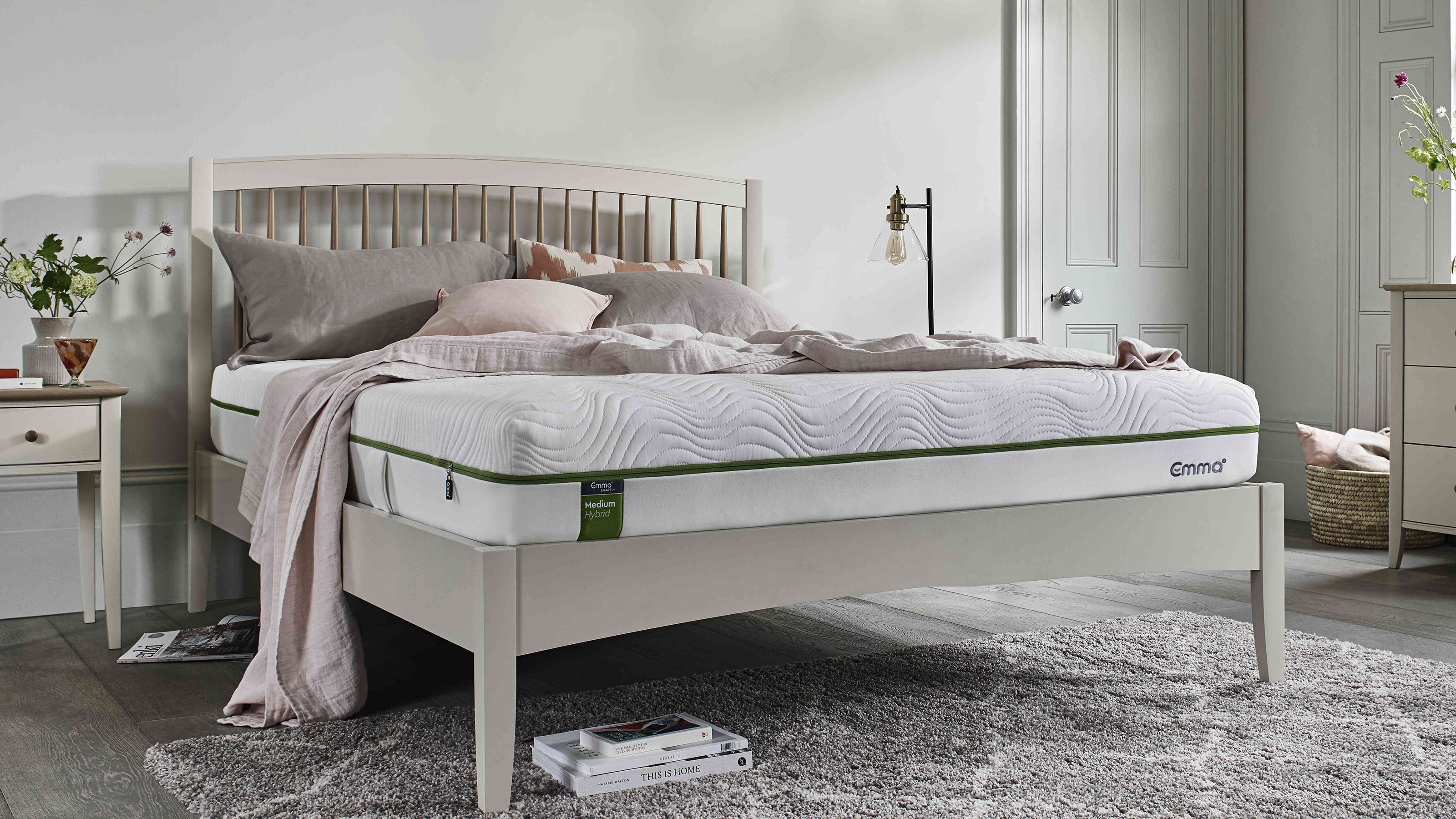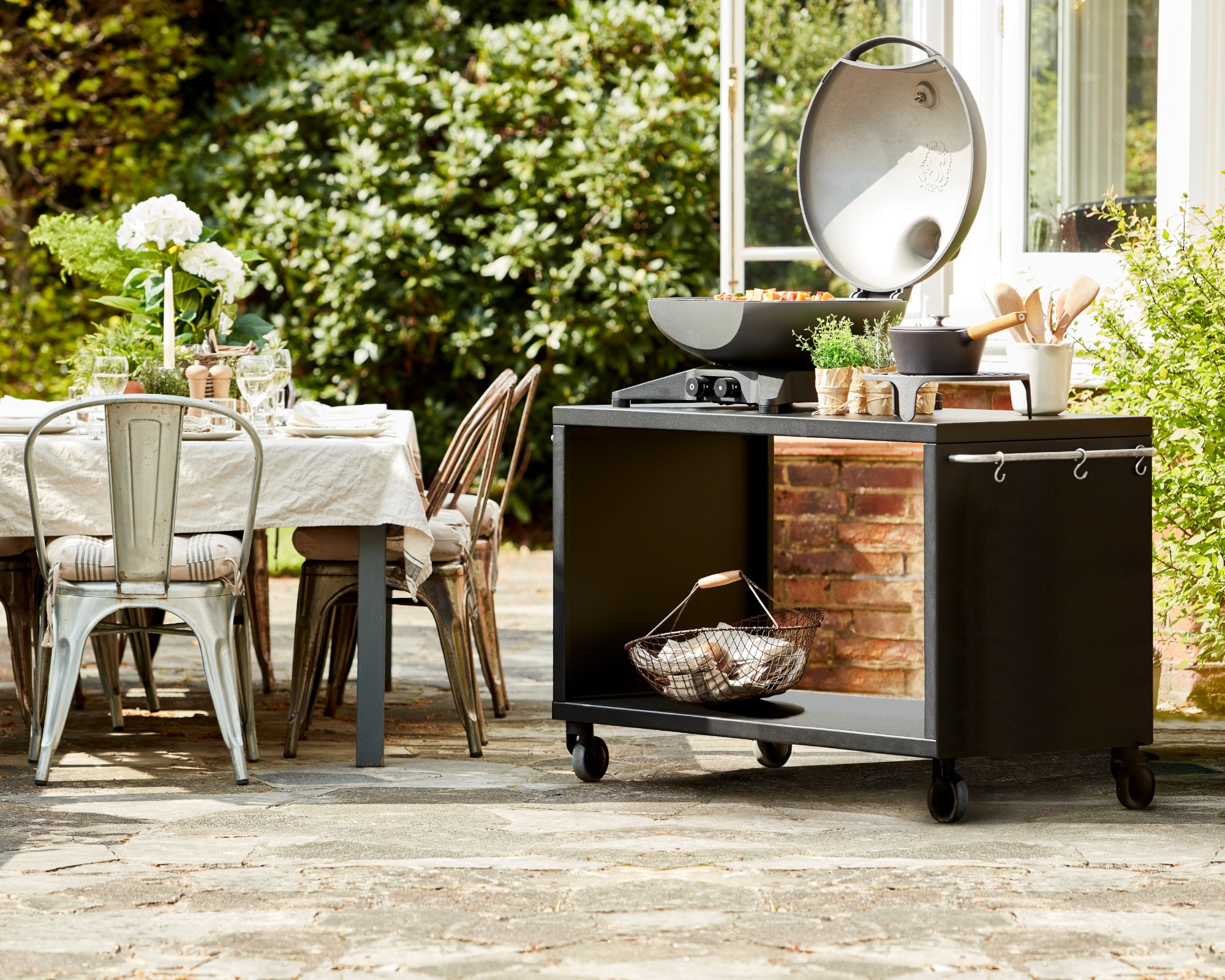

Boiling water taps deliver instant hot water, meaning you’ll never have to boil a kettle again. But are they worth the spend? What benefits, other than speedy service, can they offer, do they all dispense boiling water, how much do they cost and should you include one in your kitchen transformation?
Find out about all the pros and cons of boiling water taps here. You can use our price comparison tool to find the best deals, too, but if you want to see all our top picks, then browse the best boiling water taps – which includes every make from Quooker to Franke and Abode.
1. Boiling water taps need professional fitting
Like the best kitchen faucets, these taps sit on the worktop, have to be plumbed in, and the water tanks need to be connected to electricity to work, so it's best to hire a professional fitter to install them. Boiling water taps can be retro-fitted into an existing kitchen, but they’re more usually installed as part of a kitchen revamp. Fitting costs are sometimes included with the tap so check before you buy.
2. Not all boiling water taps provide boiling water
There’s a subtle but distinct difference between boiling water taps and hot water taps: boiling water taps – think Quooker, Franke and Qettle – deliver water at 100ºC; hot water taps deliver water just shy of that. As a consumer, you won't notice a difference, but if you're fussy about how hot your morning coffee is, you'll want to check this out.
3. Boiling and hot water taps provide hot water instantly
No more waiting around for the kettle to boil, no more realising there’s not enough water in the kettle for that pasta pan. With boiling water taps (and the best hot water dispensers), you simply fill your cup or pan directly from the tap.
4. Boiling and hot water taps mean streamlined worktops
These taps can dispense either cold and boiling water; cold, hot and boiling (or nearly boiling) water; or cold filtered water, mains cold and hot water, and boiling water. This means you can have one tap to replace not just the kettle but traditional kitchen taps, too. Perfect if you're designing a minimalist, contemporary kitchen or have little worktop space in a small kitchen.
5. Boiling water taps can come with a flexi hose
Some boiling water taps come with a flexi, pull-out hose, which can be really handy for cleaning the sink or for filling a pan on the worktop at the side of the kitchen sink.
6. Boiling water taps can help you kick that single-use plastic habit
How? Some of these taps can dispense chilled fizzy water, so you can instantly reduce plastic bottle usage and make more space in the fridge, too.
7. Boiling water taps are safe for family homes
Make sure you buy a child-friendly tap: the sides of these taps don’t get hot and the child-proof functionality means kids can’t turn them on by mistake, and neither can adults. Some, like the Stiebel Eltron Undersink Water Boiler and 3-in-1 tap come with a child lock.
8. Boiling water taps are good for people with mobility problems
No more lifting, filling and pouring from a heavy kettle.
9. Boiling water taps can make tap water taste better
Better models will filter the water from your tap, removing nasty-tasting chemicals. Some will also aerate and soften the water for you, ideal if you live in a hard water area.
10. Limescale-control and filters cost extra
Remember what we just said above? Bear in mind that limescale-control units cost extra: Quooker’s is around £245, for example. Without a limescale control unit, like a kettle, the tap and tank will still need to be cleaned of limescale. Some boiling water tap manufacturers recommend a descaling solution to clean the interior of the tank, but check before you use on in case you invalidate your warranty. The tap's nozzle will also need cleaning of limescale. Only use recommended limescale removers so that you don't damage the tap's material.
Filters need replacing, too. Grohe’s Red Duo, for example, needs its filter replaced every 600 litres at a cost of £64 per filter. Look for a model, such as Franke’s Omni tap or Qettle's 4-in-1, which have a warning light that flashes when the filters need replacing. Follow your manufacturer's recommendations when it comes to filter replacement (usually every six to 12 months); if you don't you might invalidate your warranty.
11. Some boiling water taps let you adjust water temperature
Want a range of temperatures on tap? Look for a boiling water tap with an adjustable temperature. For example, Michel Roux’s Monaco tap has a touchscreen to let you adjust the temperature up to 99°C.
12. Boiling water taps come in a range of finishes
Just like traditional kitchen taps, these taps can come in a range of finishes, from chrome to brushed copper, to suit your scheme. Not all taps are available in all finishes; basic chrome is cheaper than more adventurous finishes.
13. Are boiling water taps cheaper to run than kettles?
While a kettle costs around 2.5p per boil, Quooker says that their boiling water taps cost just 3p per day to run on standby. Quooker does not use boiler technology, but instead uses a unique patented vacuum flask tank, which holds water under pressure at 110°C, so that it is dispensed at a consistent true 100°C boiling.
14. You'll have to sacrifice cupboard space for the water tank
Boiling water taps have tanks that usually sit below the kitchen sink in the cupboard you might use for cleaning product storage or the kitchen bin. Before you buy, and decide if you’re buying the right model to suit your family’s needs, check how big the tank is. Smaller ones, like Abode's Pronteau 3-in-1, have a two litres water capacity; larger ones, which can hold 11 litres, are bulkier.
15. You won’t need a large tank
A small tank will suit most families’ needs. Unless, that is, you regularly consume more than a couple of litres of tea at a time. Tanks usually heat up again within a few minutes, should that be the case – check your tank's reheat time before you buy.
More on kitting out your kitchen:
Join our newsletter
Get small space home decor ideas, celeb inspiration, DIY tips and more, straight to your inbox!
Lucy is Global Editor-in-Chief of Homes & Gardens having worked on numerous interiors and property titles. She was founding Editor of Channel 4’s 4Homes magazine, was Associate Editor at Ideal Home, before becoming Editor-in-Chief of Realhomes.com in 2018 then moving to Homes & Gardens in 2021. She has also written for Huffington Post, AOL, UKTV, MSN, House Beautiful, Good Homes, and many women’s titles. Find her writing about everything from buying and selling property, self build, DIY, design and consumer issues to gardening.
-
 You won't believe this stunning five-bed family home used to be a tiny two-bed
You won't believe this stunning five-bed family home used to be a tiny two-bedKatie and Stuart went big with a double-story extension to create a dream space for themselves and their daughters
By Ifeoluwa Adedeji Published
-
 The freestanding bath in this dreamy bedroom is sheer five-star luxury
The freestanding bath in this dreamy bedroom is sheer five-star luxuryEmma and Martin wanted a suite just like in an upscale hotel — mission totally accomplished.
By Ellen Finch Published
-
 I just know 2023 is going to be all about black bedding sets
I just know 2023 is going to be all about black bedding setsWhite sheets are out, black bedding sets are in — here's everything you need to know about this bedroom decor trend
By Louise Oliphant Published
-
 A bland beige bathroom is transformed into a STUNNING contemporary sanctuary
A bland beige bathroom is transformed into a STUNNING contemporary sanctuaryFirst-time homeowners Ellie and Oliver’s new bathroom is a well-planned fusion of modern pieces and exotic touches
By Ellen Finch Published
-
 Mattress disposal: how, where, and how much it will cost?
Mattress disposal: how, where, and how much it will cost?Mattress disposal is tricky. You’ve swapped it for a supportive new design, but how to dispose of the bulky old mattress? Follow our guide to find out...
By Sarah Warwick Published
-
 36 outdoor kitchen ideas – enviable and inspiring designs for your backyard
36 outdoor kitchen ideas – enviable and inspiring designs for your backyardEnjoy alfresco cooking and entertaining all year round with the best outdoor kitchen ideas for every space and budget.
By Sarah Warwick Last updated
-
 Real home: Gorgeous green kitchen has a fresh feel
Real home: Gorgeous green kitchen has a fresh feelA stunning extension and Charley Smith's clear design vision has resulted in a family kitchen-diner that’s ripe for entertaining.
By Ifeoluwa Adedeji Published
-
 [redirected] Best coffee beans: 12 delicious coffees to start your morning with
[redirected] Best coffee beans: 12 delicious coffees to start your morning withYour perfect cup of coffee starts with the coffee bean. We're sharing our best-bagged beans from coffee shop favorites to gourmet roasters.
By Jaclyn Turner Published